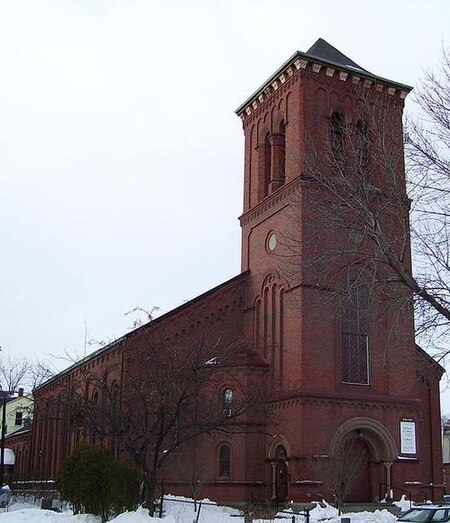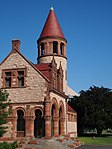Mid-Cambridge
Middlesex County, Massachusetts geography stubsNeighborhoods in Cambridge, Massachusetts

Mid-Cambridge, also known as "Area 6", is a neighborhood of Cambridge, Massachusetts. It is bounded by Massachusetts Avenue on the south and west, Prospect Street on the east, and Hampshire Street, the Somerville border, Kirkland Street, Quincy Street, and Cambridge Street on the north. In 2005, the neighborhood had a population of 13,285 residents in 5,989 households. The average household income was $50,410.
Excerpt from the Wikipedia article Mid-Cambridge (License: CC BY-SA 3.0, Authors, Images).Mid-Cambridge
Broadway, Cambridge Cambridgeport
Geographical coordinates (GPS) Address Nearby Places Show on map
Geographical coordinates (GPS)
| Latitude | Longitude |
|---|---|
| N 42.372638888889 ° | E -71.109652777778 ° |
Address
Broadway 420
02139 Cambridge, Cambridgeport
Massachusetts, United States
Open on Google Maps








